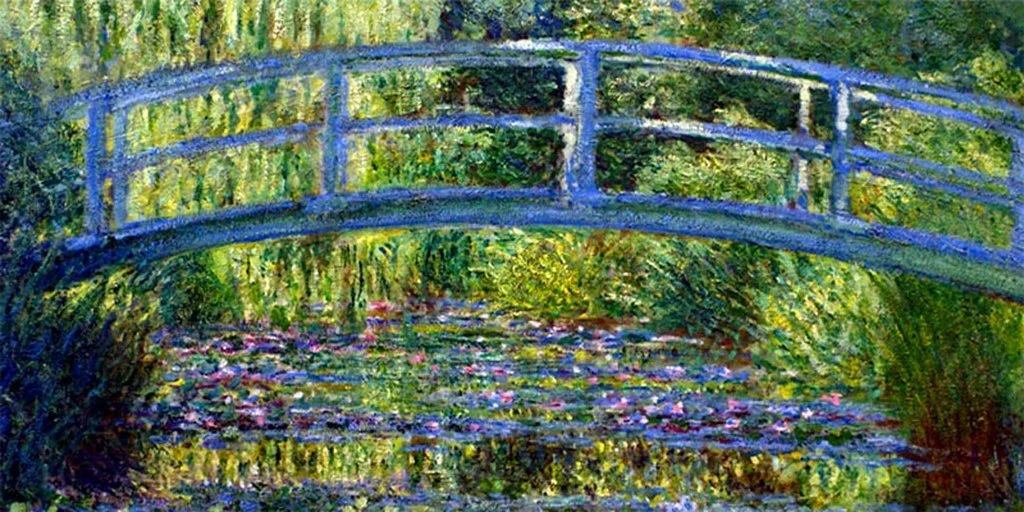Claude Monet - French Impressionist
A case can be made that Claude Monet invented Impressionism. At the turn of the 20th century, he painted an inspiring series of murals of water lilies in his gardens in Giverny, France. Familiar to most art believers, the painting shown here is an exceptional example of one of his greatest works. In particular, the bridge is a well-known icon.
That said, when viewed in person, paintings from the Giverny series are among the best examples of abstract expression. Stand within three feet of an individual water lily and it disappears completely, becoming a brushstroke of pure color exclusive of story, composition and context.
While the central images of his Giverny series don’t seem to be metaphorical, they do tell a powerful visceral story of serenity and calm. The bridge is singular despite inspiring a different myth for each viewer. I once believed the bridge to span 400 meters despite my understanding of the average size of a water lily.
I want the bridge to span 2500 meters. I want the bridge to descend into chaos on both sides. I want a mindful calmness, too.
Sonny Rollins - jazz virtuoso
Despite both sides of the Williamsburg Bridge descending into chaos, neighbors in both New York City boroughs frown on the volume of certain types of noise. Control is a funny and unpredictable thing. In the early 1960s, later in the evening, when he needed a place to practice his saxophone, myth holds that Rollins would walk the span perfecting his instrument’s voice.
I’d love to hear him playing while standing on the bridge in Giverny -- improvising, even if he chose silence as his statement.
>
Enjoy a Sonny Rollins album on vinyl, the way it was meant to be heard
Hang a stunning Monet print in your living room, kitchen, den or bedroom
—
Need words? Make contact.
Share


